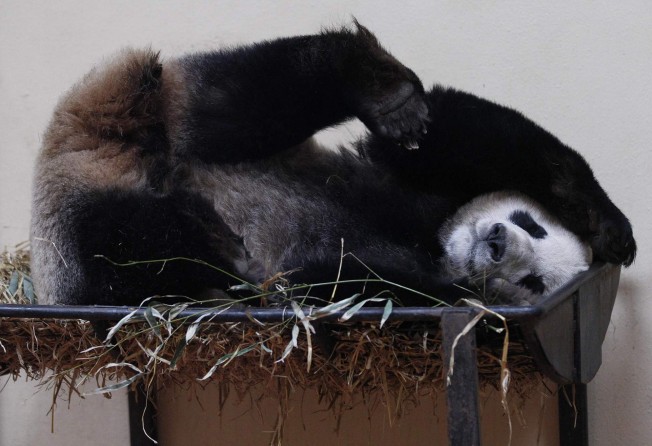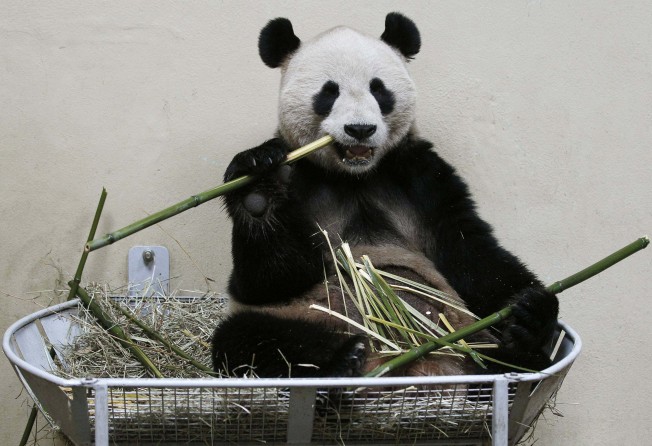
UK’s only panda pair, Yang Guang and Tian Tian, to return to China
- Pandas Yang Guang and Tian Tian will return to China later this year after special farewell events in their Scottish home
- Despite efforts to breed, female Tian Tian has not produced a cub during her time in Edinburgh Zoo since 2011

It was supposed to be a match made in heaven that would produce a cub but after years of trying, Edinburgh Zoo said on Wednesday it is now sending its breeding pair of giant pandas back to China.
The Royal Zoological Society of Scotland (RZSS) said it plans to give Yang Guang (Sunshine) and Tian Tian (Sweetie) a “giant farewell” at the zoo before their departure later this year.
“As the UK’s only giant pandas, they have been incredibly popular with visitors, which has helped to connect millions of people to nature as well as raising vital funds for wildlife conservation,” said RZSS chief executive David Field.
“We will be providing as many opportunities as possible for people to say goodbye and to celebrate the tremendous impact these two charismatic bears have had on our communities, helping to create a world where nature is protected, valued and loved.”
Yang Guang and Tian Tian arrived in Edinburgh in December 2011 as part of a 10-year arrangement with the China Wildlife Conservation Association.
The popular pair even had a special tartan created in their honour, in black, white and grey representing their fur, and red to symbolise China.
But it was soon clear the two were not eager to breed. Officials at the zoo failed in an attempt to artificially inseminate Tian Tian in 2013.
Yang Guang was later castrated after being treated for testicular cancer.
Giant pandas are notoriously difficult to breed in captivity, with bears losing interest in mating the natural way – or simply not knowing how.
A female panda has a single oestrous cycle in the spring in which she is fertile for only 24 to 36 hours, according to the Pandas International conservation organisation.

Attempts to breed pandas in captivity first began in China in 1955. In 1963, Ming Ming, the first ever captive-bred giant panda was born at the Beijing zoo.
Pandas are found in the wild in southwest China, along the Tibetan Plateau.
Their population has been cut by poachers, who hunted them for their pelts and also illegal logging, which harms the growth of bamboo, its main food source.
Pandas International estimates the population of wild giant pandas is currently at 1,864.
There are approximately 600 in captivity in panda centres, zoos and wildlife parks around the world.
Edinburgh Zoo said the Yang Guang and Tian Tian could leave the Scottish capital as early as the end of October 2023, two years after their loan was extended.
“By collaborating with partners in China and welcoming Yang Guang and Tian Tian to Scotland, we have had many successes for … the past 11 years in terms of technique exchanges, scientific research and public engagement,” Field said.
“We are also very proud of the contribution we have made to giant panda breeding research alongside our partners at the University of Edinburgh and our findings have been of real benefit to international efforts to protect the species.”
